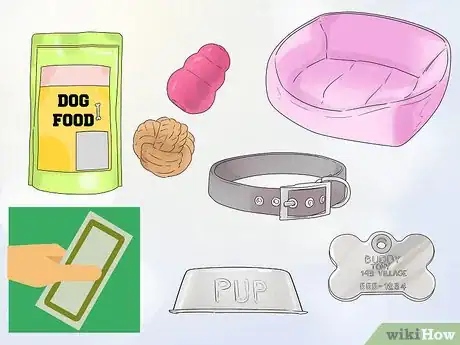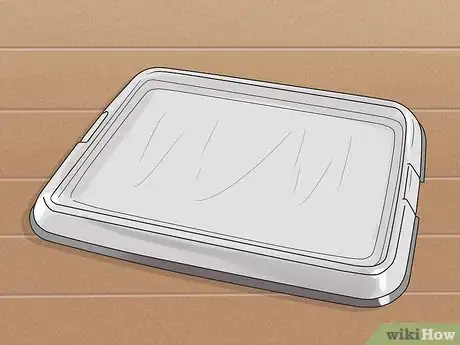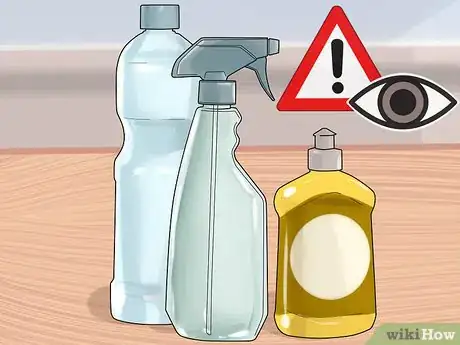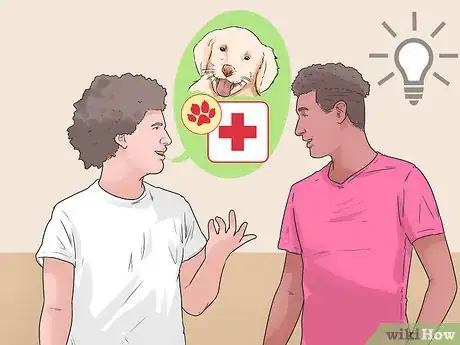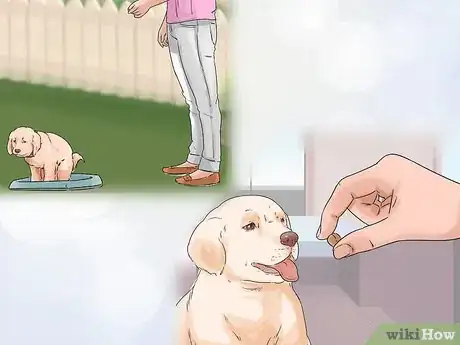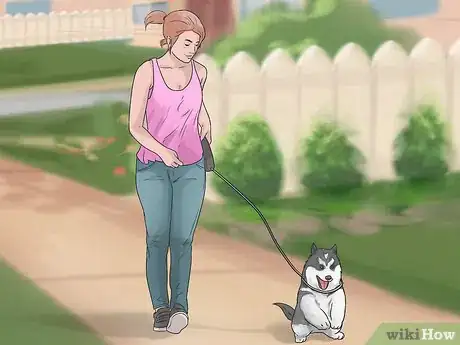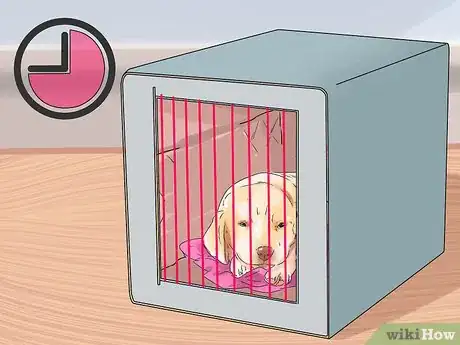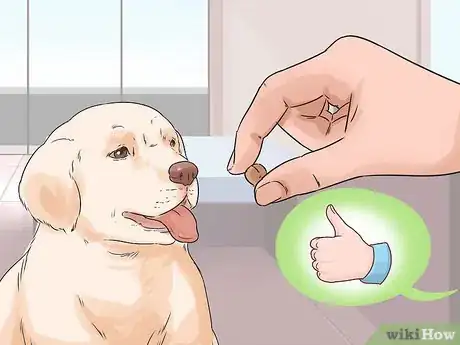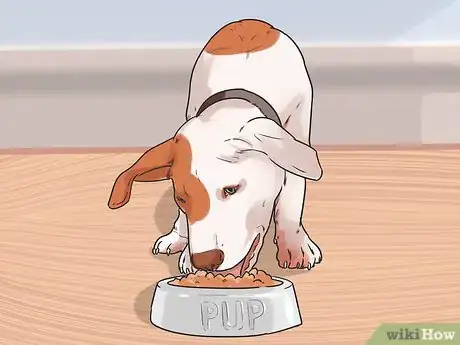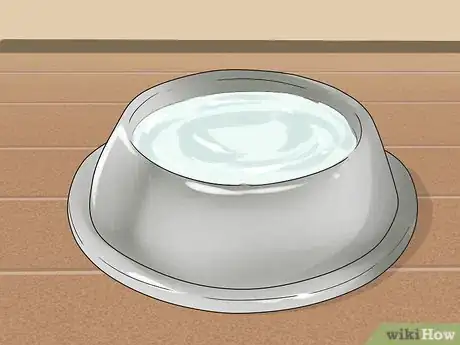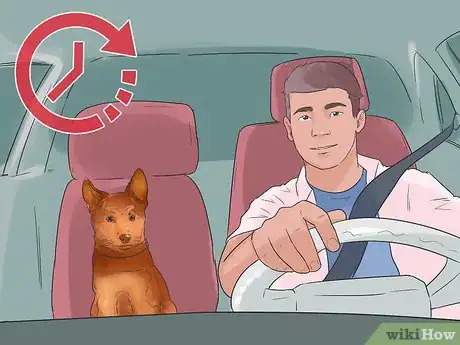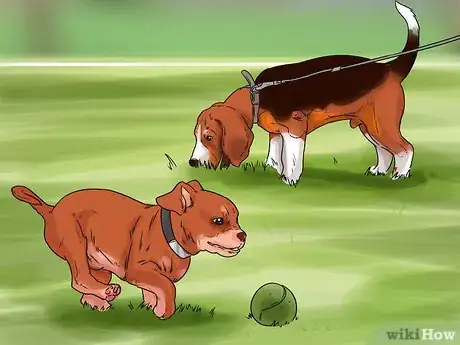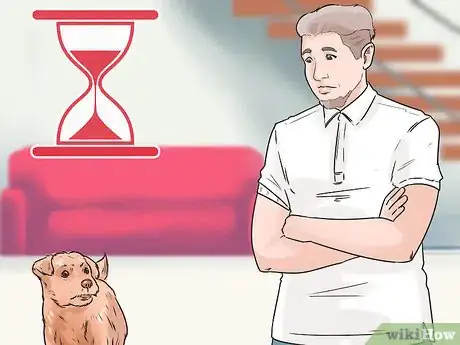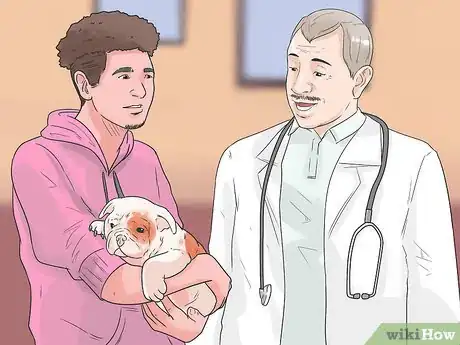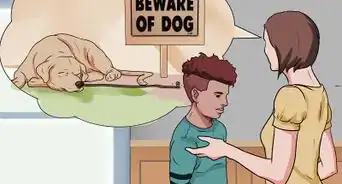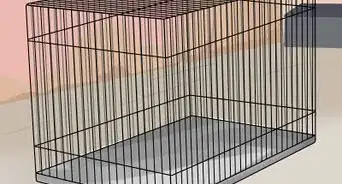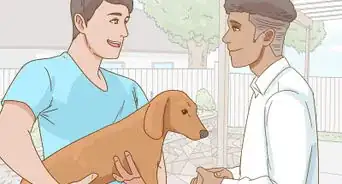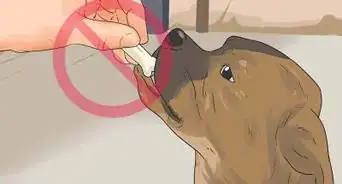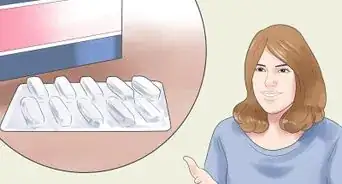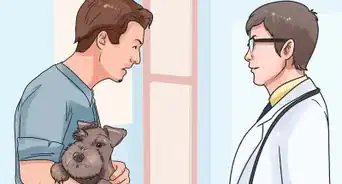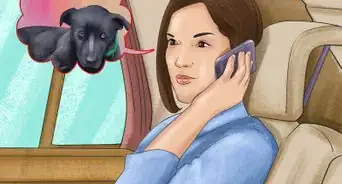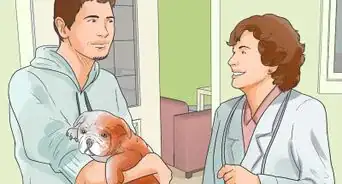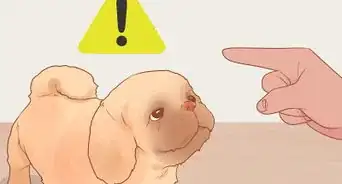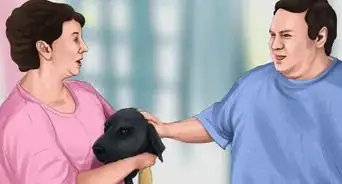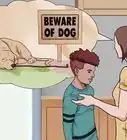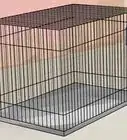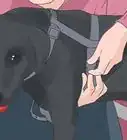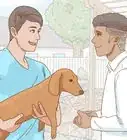This article was co-authored by Lauren Baker, DVM, PhD. Dr. Lauren Baker is a Veterinarian and Assistant Scientist at the University of Wisconsin-Madison. With over 10 years in veterinary medicine, she specializes in the concept of “one health,” which uses insights from veterinary medicine to help human medical research. She holds a Ph.D. in Comparative Biomedical Sciences, a Doctor of Veterinary Medicine, an MS in Comparative Biomedical Sciences, and a Bachelor’s degree in Psychology from the University of Wisconsin-Madison.
There are 10 references cited in this article, which can be found at the bottom of the page.
This article has been viewed 28,906 times.
Getting a new puppy can be such a fun experience. But taking care of a puppy requires quite a bit of hard work, patience, and responsibility. You need to train your puppy, feed your puppy, and spend quality time building a bond with your new puppy. If you want to handle having a new puppy, you’ll need to spend some time puppy-proofing your house too.
Steps
Puppy-Proofing Your House
-
1Buy supplies. Handling a puppy requires quite a bit of time, energy, and money. The first thing that you’ll need to do is to make sure you have all of the things you need to take care of your puppy.[1]
- At the very least, you’ll need to buy puppy food, food and dish bowls, collar and ID tag, leash, dog bed, toys, and treats.
- Make sure to include your puppy’s name and your phone number on your puppy’s identification tag. You may also consider including your home address.
- Choose a dog food that is intended for consumption by puppies because these foods are specially formulated for growing puppies who need extra energy, and they also have a different balance of nutrients than adult dog foods.
- You might want to get one dog bed for the living room and one for your bedroom if you plan on letting your puppy sleep in your room at night.
- You may want to purchase a crate if you plan on crate training your dog. The crate should be big enough for your puppy to stand up and turn around in comfortably. Remember that your puppy will probably grow quite a bit in the coming months, so purchase a crate that will accommodate the adult size of your dog but that also has a divider. This will allow you to keep your puppy confined to a smaller space during training.
-
2Use puppy pads. Start preparing your house for your puppy by putting puppy pads down. Encourage your puppy to eliminate on the pads. You can do this by watching for signs that they have to pee or poop and rewarding your puppy with a treat or play whenever they go on the pad. Do not scold your puppy if he has an accident. Instead, be more vigilant in the future and pay closer attention to signs that your puppy needs to go.
- Setting up puppy pads is a great way to start house training your puppy.
- Most puppies will need to go potty after they wake up, eat, and play. Plan to give your puppy an opportunity to go potty after each of these activities.
- Puppies often sniff the ground and walk in circles just before they pee or poop. If you see your puppy doing this, then scoop the puppy up and take him to an appropriate location. This will happen quickly, so you will need to act fast if you notice your puppy doing this.
- Give your puppy praise, petting, and/or a treat every time they go potty in the right place. Ignore any accidents your puppy has and quickly clean them up with an enzyme-based cleaner.
- Puppy pads are helpful during the first stages of house-training, especially if you live in an apartment. However, you can also skip the puppy pad stage and teach your puppy to go potty outside from the beginning of house training.
Advertisement -
3Remove potential hazards. Puppies are cute, but they get into everything. You need to make sure that there is nothing within reach that could potentially hurt your puppy. Spend some time putting all chemicals and food products up out of reach so your puppy can’t get to it.[2]
- This includes things like cleaning products, hair products, car maintenance supplies, and other food goods that could harm your puppy if ingested.
- You may also want to hide all electrical cables to the best of your abilities. You don’t want your puppy to chew on it and get electrocuted.
-
4Educate all household members on caring for the puppy. Having a puppy is a big responsibility that can affect every single person who lives in your house. Make sure each person is aware of how you expect them to treat the puppy and what each person will have to do in order to care for and train the puppy.
- Make it clear that you don’t want to feed the puppy human food from the table because you don’t want to train the dog to beg for food.
- Talk to your roommates or family members about letting the puppy outside to use the bathroom whenever the puppy goes near the outside door.
- Make sure everyone knows that puppies often bark and howl during the night, but they usually grow out of this within the first couple of weeks.
Training Your Puppy
-
1House train your puppy. Put the puppy pads near the door you use to take the dog outside to the bathroom. When the puppy uses the puppy pads, pet the puppy and give the puppy a treat. If the puppy starts to use the puppy pads all the time. you can start taking puppy pads away one at a time. Soon you can take the puppy outside to let it go to the bathroom outside all the time.[3]
- Remember to take your puppy outside to use the bathroom regularly. The puppy pads should just be there for cases of emergency when the puppy can’t get your attention. You want the puppy to learn to go to the bathroom outside, not just on the puppy pads.
-
2Expend energy. If your puppy starts ripping up or chewing on the furniture, spend some time playing with. Destructive behavior usually means that your puppy is full of energy and needs to get it out.[4]
- Take your puppy for a walk or spend some time playing with it using a chew toy. You can even just chase your puppy around the room.
-
3Use redirection. When the puppy starts to rip up the furniture, loudly say “NO!” and then redirect your puppy’s energy to something that is appropriate to chew on, such as a favorite toy. Over time your puppy will learn that you don’t want them to engage in these behaviors.[5]
- Keep in mind that scolding the puppy alone is not enough to change his behavior. You will need to teach him what you want him to be doing instead and this is why redirection is important.
-
4Praise your puppy. Use positive reinforcement to help your puppy learn what kinds of behaviors are acceptable to you. When your puppy does something you like, give it a treat or praise the puppy. Pet it and love on it so that you can help build the bond between you and show the dog how to act.[6]
- Don’t yell at your puppy, especially for something that happened hours ago that you just found out about. Your puppy won’t have any idea what you are yelling at it for.
Providing For Your Puppy’s Needs
-
1Feed your puppy. A puppy needs a well-balanced diet in order to maintain a happy, healthy life. They usually need to be fed more frequently than adult dogs. Consult your veterinarian for breed-specific recommendations regarding how much you should feed your puppy.[7]
- 6-12 weeks: Puppies this age need to eat food that is specially formulated for puppies to meet their nutritional needs. Feed your puppy around four times per day, with serving size varying depending on the breed and size of your puppy. During this time, you can add a little milk or water to the puppy food to moisten it.
- 3-6 months: Decrease the feeding schedule to three times per day, but continue with the same serving size, as recommended by your vet.
- 6-12 months: Begin feeding your puppy twice a day and begin transitioning to adult dog food.
-
2Make drinking water available. Regular access to drinking water is one of the most important things you need to give to your puppy. Make sure that there is always a bowl of water that your puppy can drink out of.[8]
- You may want to have a backup source of water available too in case your puppy knocks over the other bowl of water.
-
3Spend time with your puppy. Puppies need love and affection to grow up and turn into well-rounded loving dogs. Spend lots of time with your puppy so you can build a strong bond between the two of you. Cuddle your puppy and let it sleep on your lap. Show the puppy that you love it and make it feel safe around you.[9]
- Take your dog with you when you go places – like in car rides around town, to your friends’ houses, or to the park. This will help socialize your puppy to other places, people, and animals, which will allow your puppy to grow into a well-adjusted adult dog.
- Never leave your puppy in a hot car unattended.
-
4Exercise your puppy. Puppies have a lot of energy, so you need to spend a lot of time expending that energy through exercise. Take your puppy on a walk or to the dog park. You can even just run around your house with the puppy.
- Taking your puppy to the dog park will also help socialize your puppy with other dogs. This means that your puppy will probably get along better with other dogs as it gets older.
-
5Be patient. Raising a puppy requires a great deal of patience and love. Give your dog time to learn how to act and interact in its new home. Try to understand that, even in the most frustrating moments, your dog is not actively trying to upset you.
- Try your best to remain calm, even when your puppy doesn’t behave the way you want it to. Remember that the dog wants to please you, but it just needs a bit of time to learn how to fulfil your expectations.
-
6Take your puppy to the vet. When you get your new puppy, you need to take it to the veterinarian to get some puppy shots. This will probably require several trips, but it is one of the most important things you need to do for your puppy’s health.[10]
- Puppy shots help protect your dog against diseases like canine distemper, hepatitis, corona virus, parvovirus, and rabies.
- Puppies usually need shots at 6-8 weeks, 10-12 weeks, 14-16 weeks, and then annually after that.
- When you take your puppy to the vet, you can also get them started on the appropriate parasite prevention medications.
Warnings
- If you do not have a fenced yard, then do not put the puppy outside.⧼thumbs_response⧽
References
- ↑ http://www.petmd.com/dog/care/evr_dg_new_puppy_supplies_puppy_checklist
- ↑ http://www.peteducation.com/article.cfm?c=2+2106&aid=3283
- ↑ http://www.humanesociety.org/animals/dogs/tips/housetraining_puppies.html
- ↑ http://dogtime.com/dog-health/dog-behavior/746-chewing-and-destructive-behavior-aspca
- ↑ http://www.petexpertise.com/dog-training-article-using-a-time-out-to-discourage-your-dogs-misbehavior.html
- ↑ http://www.humanesociety.org/animals/dogs/tips/dog_training_positive_reinforcement.html
- ↑ http://www.akc.org/content/health/articles/puppy-feeding-fundamentals/
- ↑ http://www.petmd.com/dog/nutrition/evr_dg_the_importance_of_water
- ↑ http://thebark.com/content/9-ways-improve-your-relationship-your-dog
About This Article
To handle a puppy, feed it 3 to 4 times a day with specially formulated puppy food according to your vet's recommendations. You should also spend lots of time playing with your puppy and taking it for walks every day so you can build a strong bond with it. Additionally, have your vet give it all necessary shots, which will prevent your pet from contracting common diseases. As you raise your puppy, there will be times when it doesn't behave the way you want it to. Remember to be patient during these times, since your puppy is learning how to interact with its surroundings. For tips from our Veterinary co-author on how to feed your puppy, keep reading!
